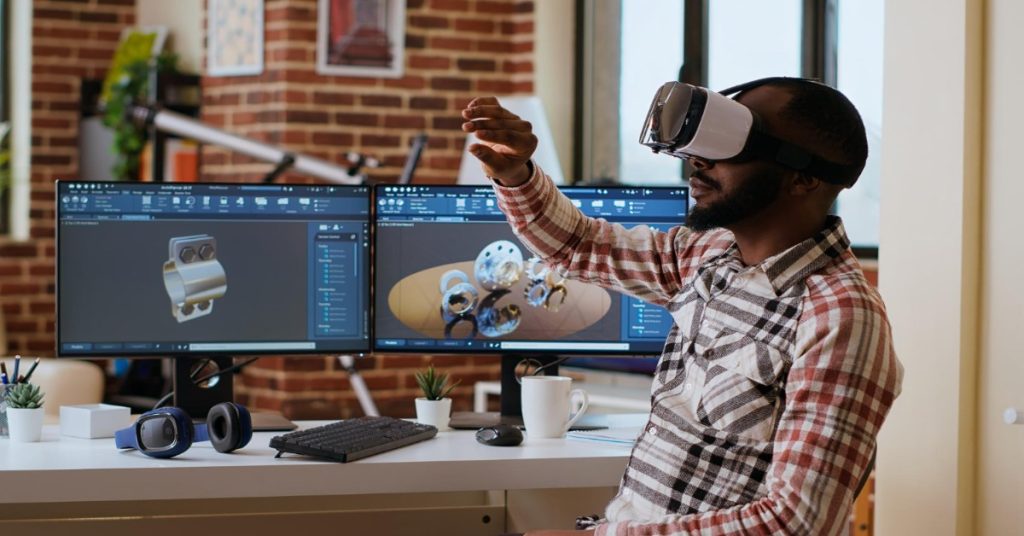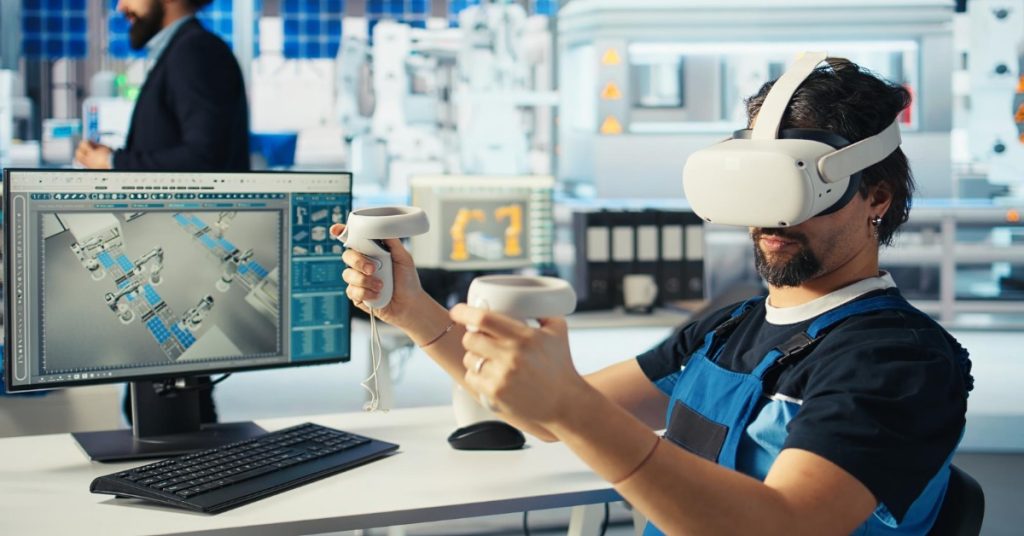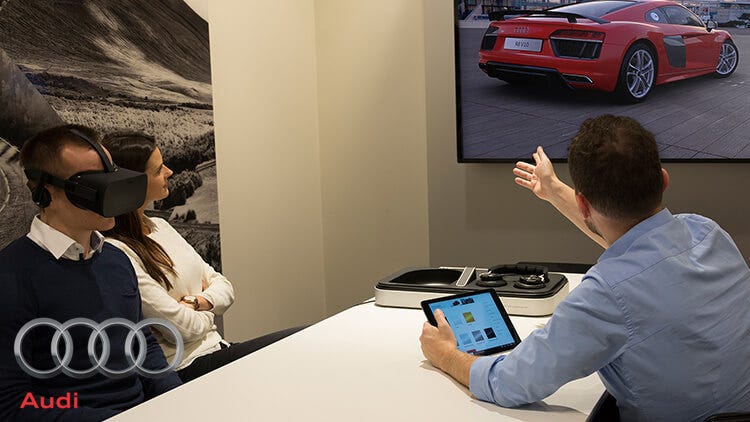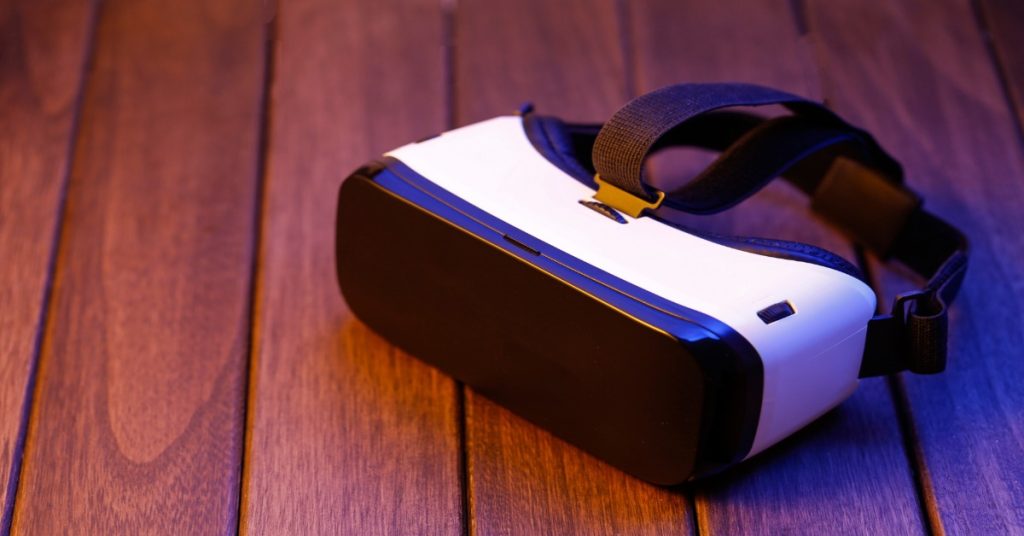How is Virtual Reality (VR) Used in Corporate Video Production?
Virtual reality (VR) is transforming the world of video production, unlocking new creative possibilities and immersive experiences that were once unimaginable. The limits of video creation are being pushed farther as technology advances, providing a greater level of involvement for both producers and viewers. Instead of being passive participants, viewers are now actively involved. They can feel as though they are a part of the experience.
In this age of digital transformation, traditional video content is evolving. VR is pushing the boundaries of what’s possible by allowing brands to create experiences where audiences don’t just watch, they participate. This interactive nature provides an emotional connection, making the content not only more memorable but also more effective in communication and engagement.
Once limited to the realms of gaming and entertainment, VR is now being embraced by companies across various sectors to create more engaging and impactful video content. From training new employees to showcasing products or hosting virtual events, VR has unlocked a new dimension of storytelling and communication.

Let’s dive into how virtual reality (VR) is being used in corporate video production and why businesses around the world are investing in it.
Table of Contents
- Why Use Virtual Reality in Corporate Video Production?
- 6 Ways Companies Use Virtual Reality in Corporate Videos
- Conclusion
- Frequently Asked Questions (FAQs) related to Virtual Reality
Why Use Virtual Reality in Corporate Video Production?
Incorporating virtual reality (VR) into video production brings several key advantages:
- Immersive storytelling: Audiences can fully immerse themselves in a 360-degree environment.
- Higher engagement: VR content leads to longer watch times and higher retention rates.
- Emotional impact: The sensory depth of VR drives stronger emotional connections.
- Remote accessibility: Global teams, partners, and clients can access immersive experiences from anywhere.
Let’s look at how companies are using VR in their business communications.
6 Ways Companies Use Virtual Reality in Corporate Videos
1. Virtual Tours
Businesses are using VR to provide virtual tours of their offices, manufacturing facilities, or campuses. This is particularly beneficial for multinational companies or organizations that want to showcase their culture and workspace without requiring travel. It allows clients, partners, & potential employees to explore the environment remotely.
Example: Airbus uses VR to offer virtual factory tours and cockpit experiences for stakeholders, clients, and even recruits. These immersive tours provide a comprehensive view of their aircraft production lines.
2. Training & Onboarding
One of the most transformative uses of VR in corporate video production is for employee training and onboarding. VR simulations provide a safe and controlled environment to practice skills, handle machinery, or experience real-world scenarios without any risk.
Example: Walmart partnered with STRIVR to create VR training modules that simulate Black Friday crowds and customer service situations, helping employees prepare for real-life challenges.

3. Product Demonstrations
Product demos in VR allow users to interact with and explore products from all angles, bringing a new depth to presentations. This is especially valuable for tech products, automobiles, or any item where physical interaction enhances understanding. Customers can explore products & see how they work in a virtual setting.

Example: Audi created an immersive VR car showroom that allows customers to experience different models, colors, and features without needing a physical vehicle on-site. Retail Innovation shares that Audi allows customers to explore a car in full 3D 360°, including fine details like decorative inlays, lighting conditions, sound, and more. It emphasizes that VR expands the entire model range to the customer regardless of physical stock.
Designboom reports that Audi introduced VR experience so that customers can virtually configure their preferred model. They can choose options like colors, leather, inlays, and infotainment systems. They can also virtually sit behind the wheel or inspect the trunk.
4. Corporate Events and Conferences
VR can be used to broadcast corporate events, conferences & meetings. Attendees can participate virtually, experiencing the event as if they were physically present. This not only eliminates travel costs but also enhances global accessibility.
Example: Accenture’s enterprise metaverse, the Nth Floor has hosted virtual recruitment and networking events using VR platforms, providing participants with an immersive brand experience and a sense of presence despite physical distance.
5. Marketing & Branding
With the rise of immersive marketing, companies are turning to VR to create branded experiences that captivate consumers in a way traditional advertising cannot. VR showrooms, interactive commercials, and 360° brand stories allow customers to engage at a deeper level.
Example: IKEA launched a VR kitchen experience where users could interact with different features, move around the space, and explore designs in real time. They launched the IKEA VR Pancake Kitchen app, which was available on Steam as of May 30, 2017. It allowed users to explore a virtual kitchen by making pancakes, choosing between cabinet finishes, and experiencing the kitchen from a child’s perspective, offering a playful and interactive environment.

6. Customer Engagement and Experience
VR enhances customer engagement by making the experience more interactive. Businesses are using virtual product launches, tours, and service demonstrations to build stronger relationships with their audience.
Example: Marriott International developed the “VRoom Service” which allows guests to order VR experiences to their rooms and explore destinations before booking their next trip. Guests can order a Samsung Gear VR headset and headphones directly to their hotel room, complete with immersive “VR Postcards”. It could make guests visit destinations like the Andes Mountains, Rwanda, and Beijing via 360° storytelling.
Read More
Common Mistakes to Avoid in 360-Degree Video Production
How to Create Multi-Language Videos to Reach Wider Audience?
Latest Corporate Video Production Trends in 2025: How Brands Are Innovating?
Conclusion
Virtual reality (VR) is becoming an essential tool in corporate video production. By creating immersive experiences, companies can connect more deeply with audiences, whether it’s clients, employees, or stakeholders. Businesses are investing in VR today and are setting the stage for a future where communication is more immersive, efficient, and emotionally resonant.
As VR technology becomes more accessible and affordable, its adoption in the corporate world is expected to grow exponentially. Companies that embrace this innovation today will gain a competitive edge in tomorrow’s immersive content competition.
Audience engagement is now about experiencing, participating, and interacting in a whole new way. The possibilities for creative exploration are limitless, where imagination can run wild and stories can come to life in dynamic and innovative ways.

Frequently Asked Questions (FAQs) related to Virtual Reality
Q1- What is virtual reality and its examples?
Virtual reality (VR) is a computer-generated simulation that immerses users in a 3D environment, often using headsets. Examples include VR training modules by Walmart or VR car showrooms by Audi.
Q2- How do VR videos work?
VR videos are filmed using 360-degree cameras and designed to be viewed through VR headsets. They allow viewers to look around and interact with the environment, creating an immersive experience.
Q3- What is the difference between VR and normal video?
Unlike normal videos which are linear and viewed on a flat screen, VR videos offer 360-degree viewing and immersive interaction. VR places the viewer inside the scene rather than watching from the outside.
Q4- What are the advantages and disadvantages of VR?
Advantages:
- Enhanced engagement
- Safe training environments
- Improved learning retention
- Memorable brand experiences
Disadvantages:
- High development costs
- Hardware requirements
- Potential motion sickness for some users
Q5- What is the future of virtual reality?
The future of VR in corporate video looks promising. With advances in hardware and AI integration, VR will become more personalized, realistic, and widely adopted across industries for training, marketing, and communication.


